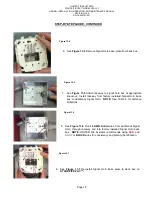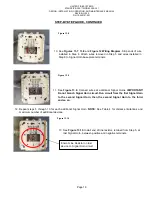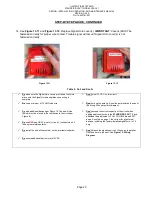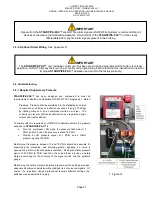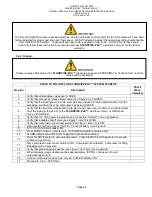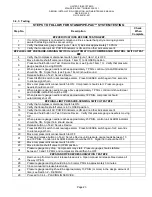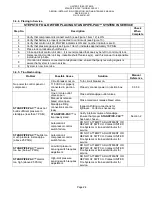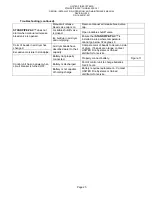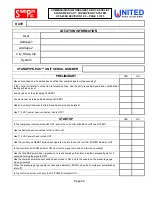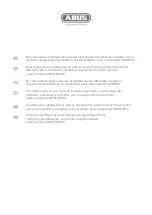
UNITED FIRE SYSTEMS
STANDPIPE-
PAC™ MODEL SSS-101
DESIGN, INSTALLATION, OPERATION, AND MAINTENANCE MANUAL
REVISION 2.00
P/N 10-540101-001
Page 11
3.3.2.
Piping.
See Figure 9.
The piping in
BLUE
is to be installed by the
STANDPIPE-
PAC™
system installer. Use
Sch. 40 black pipe and Class 150 fittings. The tee to connect the
STANDPIPE-
PAC™
shall be located after the
check valve, and should be located before the drain valve. Connect 1/2” pipe to point labeled OUTLET on
STANDPIPE-
PAC™
unit. Ensure that the standpipe is NOT PRESSURIZED prior to cutting in the tee at the
installation location.
All dry standpipes should always be maintained as dry as possible. This is to minimize internal corrosion year round,
as well as to minimize ice accumulation and blockage during cold weather.
To facilitate drainage, the low point of the standpipe must have a main drain valve, and all pipe should be pitched
towards that main drain valve. The main drain valve should be opened on a regular basis, permitting any water
accumulation or pooled water from testing to drain.
Dry standpipes installed with supervisory systems shall be installed per Figure 9 above. The diagram indicates several
important facts:
1. Where possible, the
STANDPIPE-
PAC™
should NOT be the low point of the dry standpipe system.
2. The piping from the
STANDPIPE-
PAC™
should be pitched away from the
STANDPIPE-
PAC™
so that
accumulated water drains away from the
STANDPIPE-
PAC™
outlet.
3. Install the Auxiliary Condensate Drain Device where shown on Figure 10, per 3.3.4.
3.3.3.
Manual Air Release Bleed Valve.
See Figure 2.
Locate the manual air release bleed valve on the exterior of
the building in proximity to the fire department siamese connection feeding the standpipe protected by the
STANDPIPE-
PAC™.
Attach the cap and chain to the valve. Secure the provided nameplate to the building or the
valve so that the fire department can clearly identify the purpose of the valve and follow the instructions on the
nameplate.
Figure 9
–
STANDPIPE-
PAC™
Installation
CAUTION
Failure to confirm that the standpipe is NOT pressurized could result in personal injury and / or property damage.






















